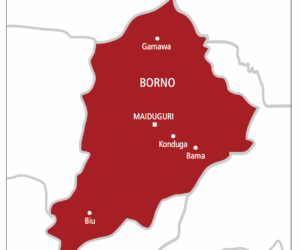The Nigerian Upstream Petroleum Regulatory Commission (NUPRC) has said Nigeria has recorded a significant rise in Nigeria’s oil rig count, growing from just eight in 2021 to 69 as of October 2, 2025.
This figure represents 762.5% increase in four years.
According to a statement by the Commission, the 69 rigs include 40 active rigs, 8 on standby, 5 on warm stack, 4 on cold stack, and 12 on the move.
SPONSOR AD
The NUPRC noted that this surge reflects renewed investor confidence in Nigeria’s oil and gas sector and aligns with President Bola Tinubu’s charge that “Nigeria is ready for business” under a stable and reformed investment climate.
“This shows a renewed investor confidence in Nigeria. The success aligns with the charge of President Tinubu that Nigeria is ready for business and that the right investment climate prevails now in the Nigerian upstream as daily actioned by the NUPRC,” the statement said.
The Commission added that 306 development wells have been drilled and completed between 2022 and 2025, underscoring the sector’s growing momentum.
On host community development, NUPRC revealed that the Host Community Development Trusts (HCDTs) have so far remitted over N358.67 billion, comprising N122.34 billion in naira and N168.91 million in dollar contributions (converted to naira at the prevailing exchange rate).
“Still in host communities, the NUPRC is overseeing at least 536 projects at various stages of completion — including schools, health centres, roads, and vocational centres — all funded by the trust fund. The achievement has tremendously curbed crude oil theft,” the Commission added.
In the area of exploration, NUPRC disclosed that it has issued Nigeria’s first Petroleum Exploration Licence (PEL) for a large offshore geophysical survey covering 56,000 km² of 3D seismic and gravity data.
Additionally, the Commission said it has reprocessed 17,000 line-kilometres of 2D seismic data and 28,000 square kilometres of 3D seismic data, leading to sharper, higher-resolution images of Nigeria’s petroleum systems and reducing exploration uncertainties.







